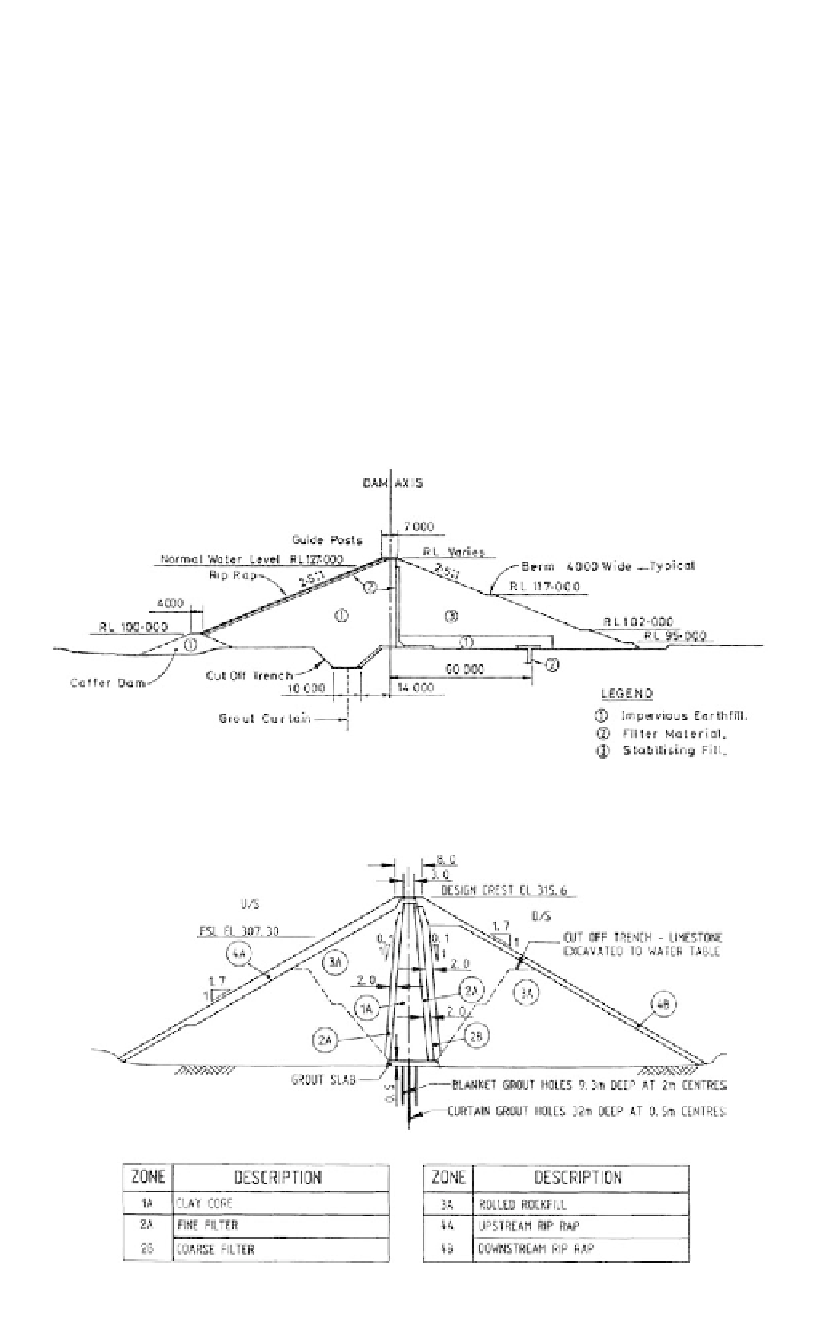Environmental Engineering Reference
In-Depth Information
Plashett Dam (Figure 8.7) is founded on coal measure rocks including sandstone, silt-
stone and coal. The design incorporates a cutoff through alluvial soils in the foundation,
a vertical drain, and horizontal drainage provided by strips of filter material. (The authors
do not favour such strips on erodible foundations as it leaves gaps in the control of inter-
nal erosion and piping in the foundation. In this case the drains and cutoff extend to rock
so the problem is not so great). A vertical drain is provided through the alluvium to inter-
cept seepage which bypasses the cutoff.
8.3.2.3
Central core earth and rockfill dams
The Bjelke-Petersen Dam (Figure 8.8) is largely founded on a very complex sequence of
andesitic volcanic rock and limestones, which have been intensely sheared and folded.
These sequences alternate with metamorphosed phyllites, with steeply dipping fault zones
occurring at the contacts between sequences. The limestone exhibited solution channels
and sink holes, often infilled with stiff, high plasticity clay. These were less frequent and
less permeable below the water table.
Figure 8.7.
Plashett Dam (ANCOLD, 1990).
Figure 8.8.
Bjelke-Petersen Dam (courtesy of Water Resources Commission of Queensland).

